How to Make Pothos Fuller and Bushier
Is your pothos looking leggy and sparse? There are ways to fix the problem. Epic Gardening founder Kevin Espiritu explains 5 ways you can make your pothos fuller and bushier.
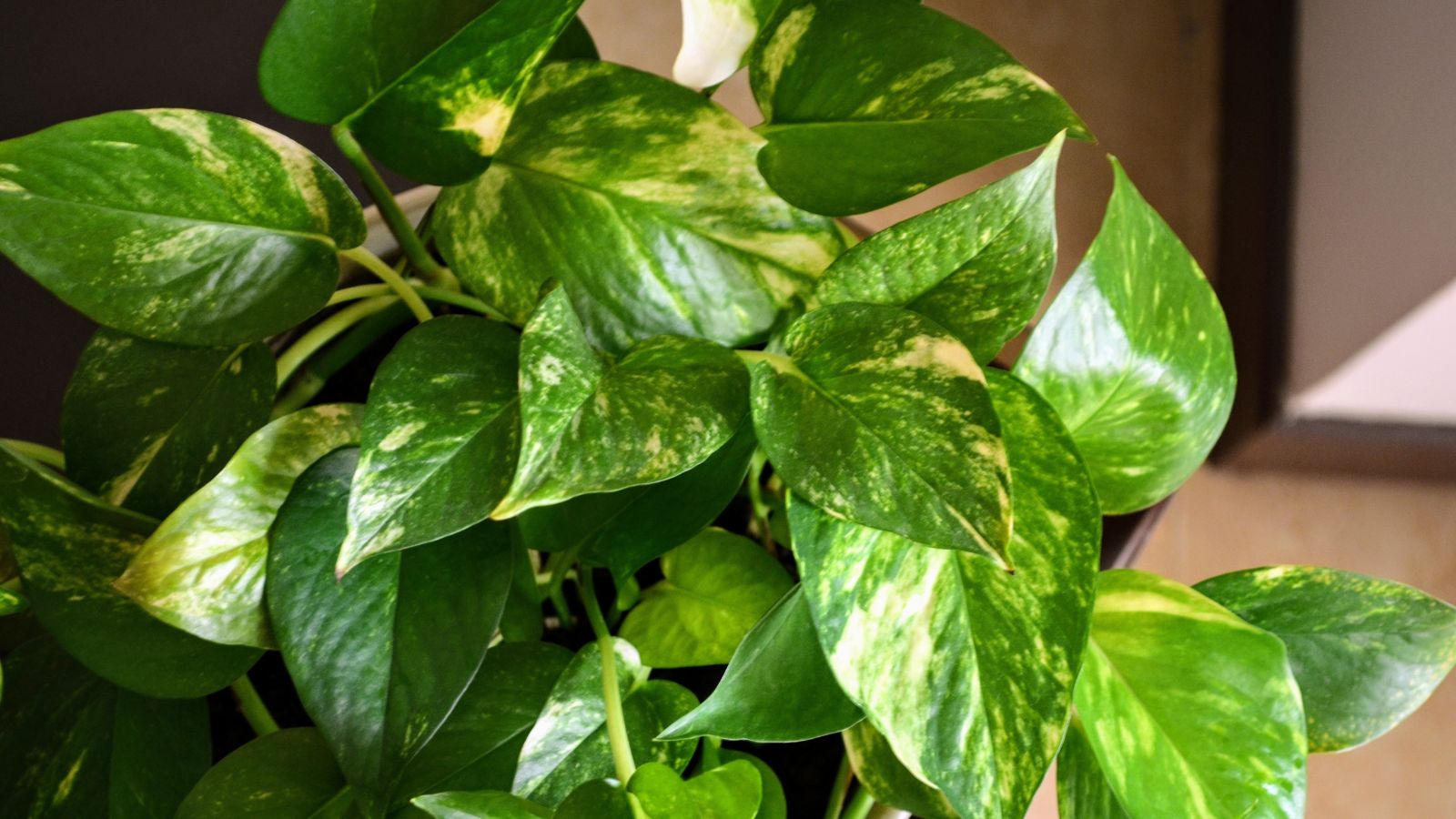
Contents
Pothos, also known as devil’s ivy, silver vine, money plant, and more, is arguably the most popular trailing plant of all time. With its attractive, heart-shaped leaves (not to be confused with heartleaf philodendron), cascading vine-like growth, and air-purifying qualities, pothos is an ideal choice for any home or office.
But most of us are after that lush, bushy look. So how do you make a pothos fuller? Here are 5 care tips to help you get that full, vibrant vine you’re aiming for!
Prune
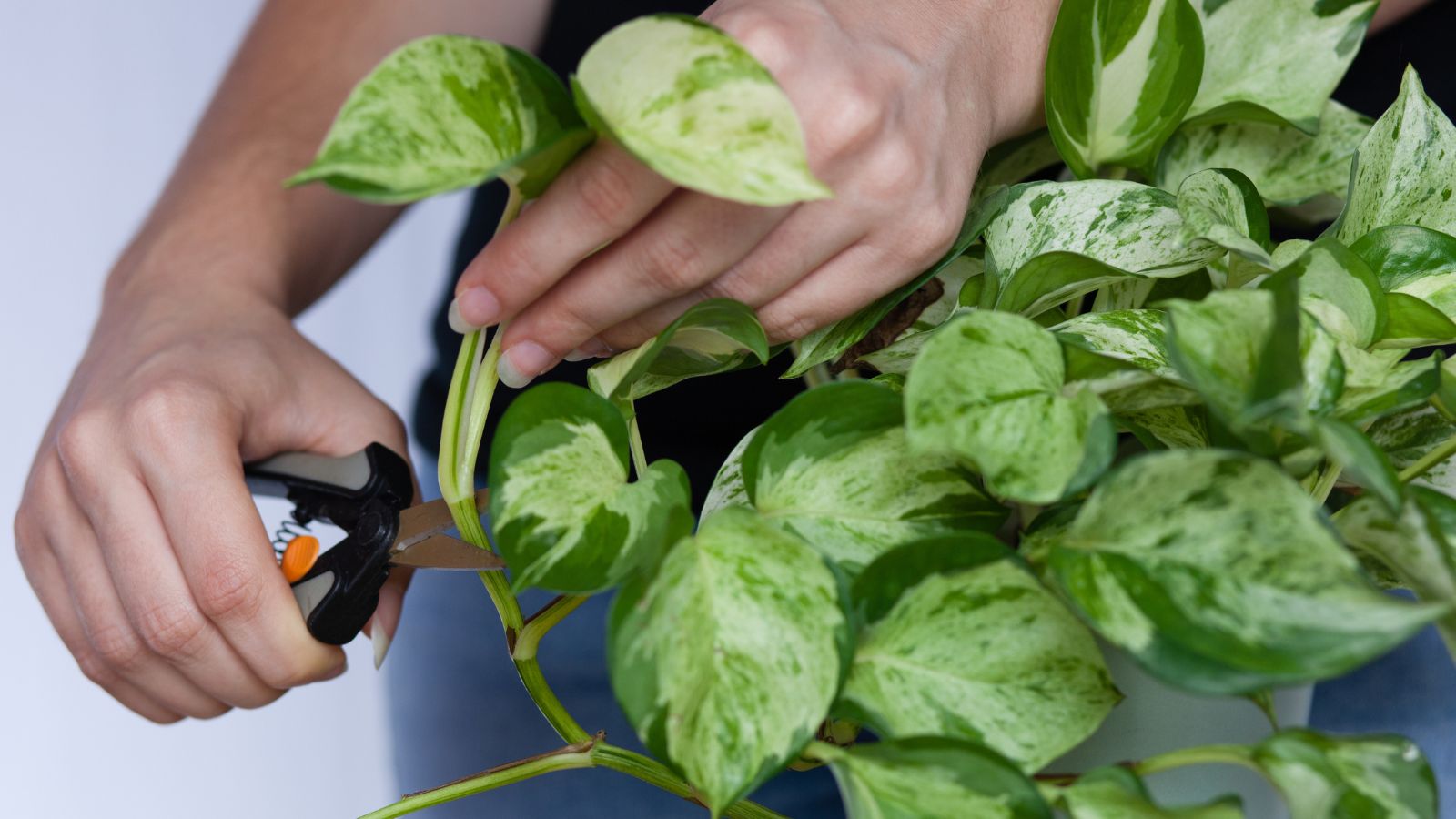
To achieve that bushy, full look, pothos plants need a regular pruning routine. Without pruning, the stems will continue trailing and becoming thinner over time. They often grow into areas with less light, leading to sparse foliage and an uneven, leggy appearance.
The first (and most effective) method to encourage a fuller plant is proper pruning. This encourages branching and bushier growth, while also giving the plant a cleaner, more sculpted shape.
If you want to make your pothos fuller from the top, use a pair of clean pruning shears to trim back the stems that are growing outward and downward. This encourages new leaf growth to emerge from the top of the plant, creating a fuller crown.
When pruning, always cut just below a leaf node. This ensures new growth can sprout from that point and prevents bare stems without foliage at the ends.
And if it pains you to toss out those trimmings, don’t! Simply snip the stems a bit and use them as pothos cuttings for propagation.
Fertilize
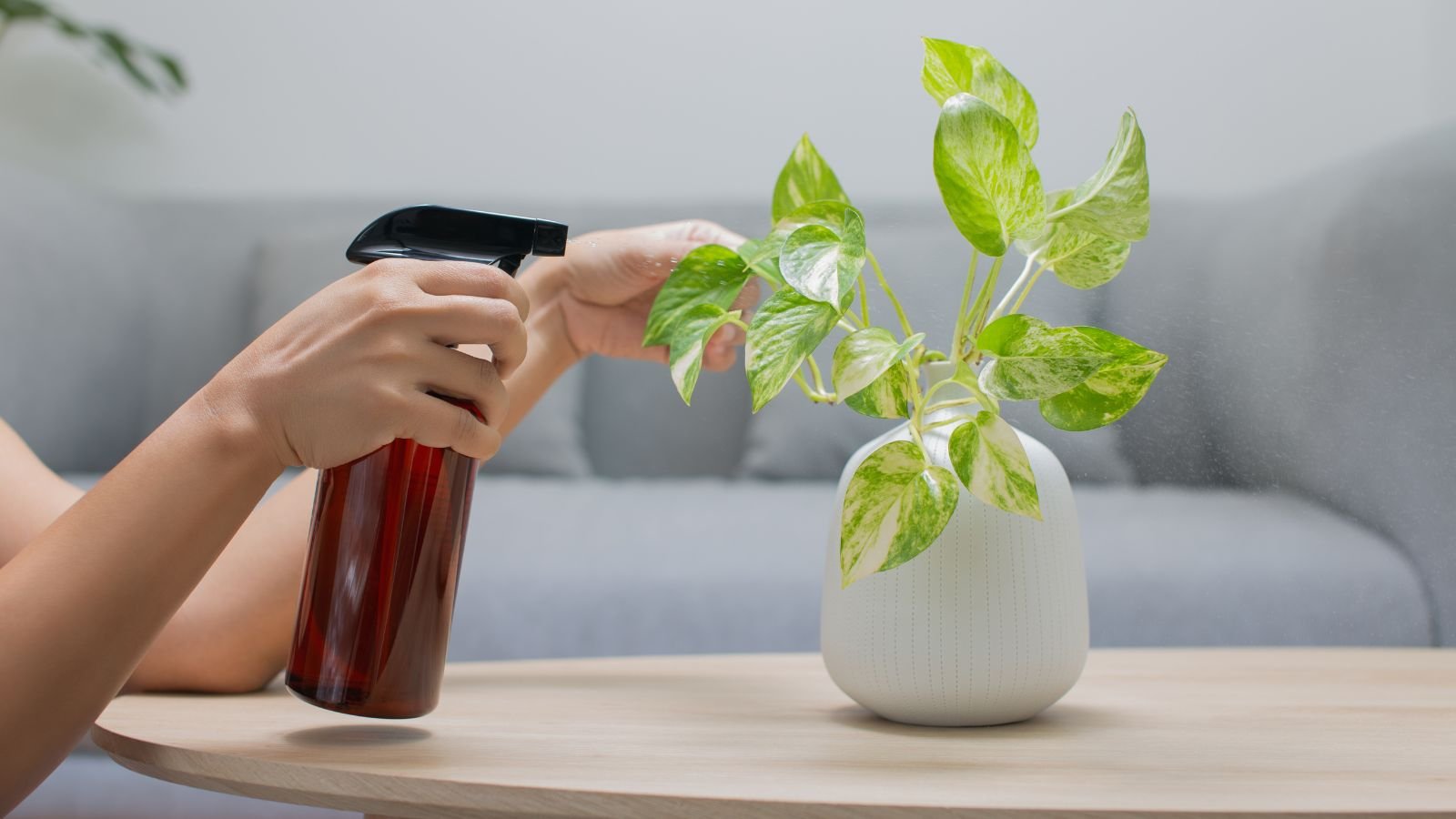
Pothos aren’t heavy feeders and generally don’t require fertilizer. However, if you want to encourage more vigorous growth and a fuller appearance (especially if the plant has been in the same container for years), a little nutrient boost can make a big difference.
You can use compost or a liquid seaweed solution to fertilize the soil once or twice a month. This will promote foliage growth and give your plant a denser, lusher look.
For solid fertilizers, sprinkle the recommended amount on top of the soil and gently mix it in using a hand trowel. Then, water the plant to activate the nutrients.
If you prefer a liquid fertilizer, dilute it to about half strength to avoid burning the plant. Mix it with water in a watering can, then apply it just as you would during a normal watering.
For pothos grown in water, avoid adding fertilizer, as it can encourage algae growth and increase the risk of root rot. Instead, replace the water weekly to keep the plant healthy.
Be mindful not to over-fertilize, as too much can damage the plant. If you suspect fertilizer buildup in the soil, you can either remove the plant and replant it in fresh soil, or thoroughly flush the soil with water several times to wash away the excess.
Increase Sunlight
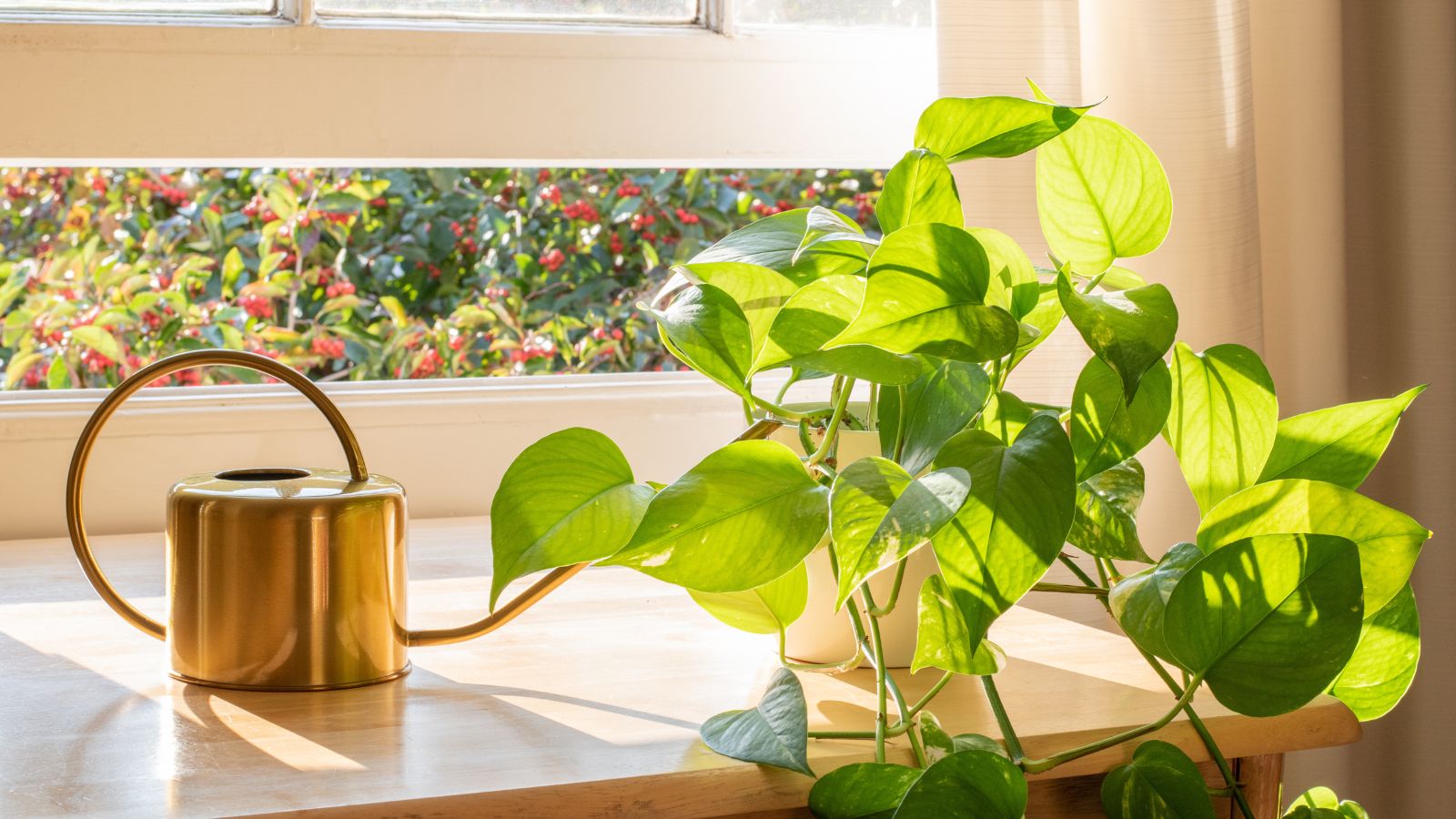
You might have noticed that pothos plants kept in well-lit areas tend to look denser and more vibrant. That’s because they need a good amount of light to thrive. Plants left in dark corners often grow slowly, lose their variegation, and appear leggy. This happens because the plant stretches toward the light, increasing the distance between leaf nodes and resulting in a thinner, more sparse look.
However, there’s a catch. You shouldn’t expose them to direct sunlight. In the wild, pothos vines grow under a canopy of trees, which means they prefer bright but indirect light.
To mimic these conditions indoors, place your pothos in a well-lit spot where it can receive plenty of indirect sunlight. A few feet away from a south, east, or west-facing window is ideal. Don’t be afraid to place it close. Just be sure the light is filtered or indirect to prevent leaf burn.
Water Consistently
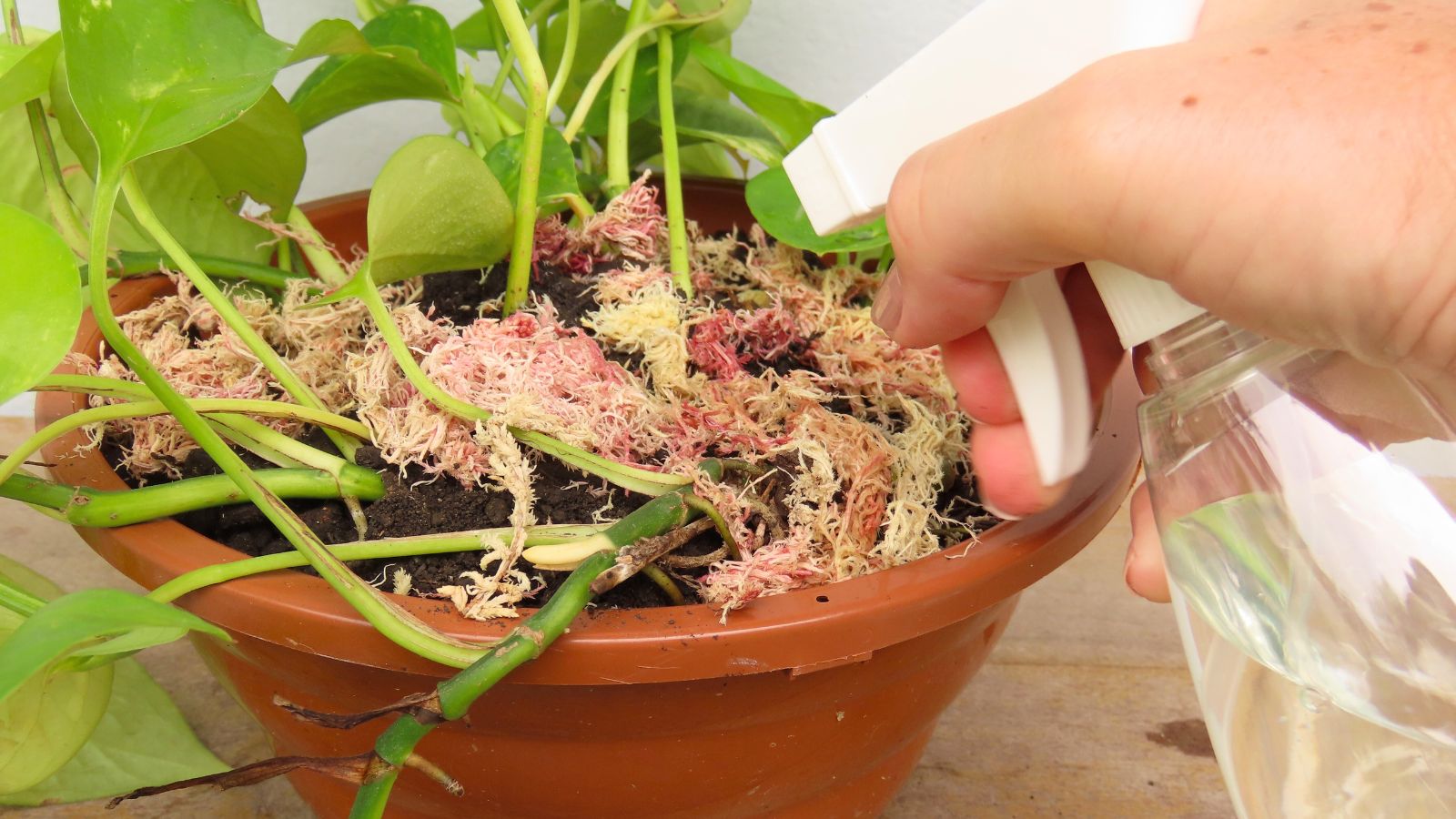
Curled leaves and browning edges on your winding pothos are classic signs of dehydration. If you want your plant to stay healthy and look fuller, establishing a consistent watering schedule is key. Remove any damaged leaves to help redirect energy to healthy growth, and begin watering regularly to support recovery.
That said, you’ll need to be careful. Overwatering can be just as harmful as underwatering.
When watering, use a watering can and continue until water begins to flow through the drainage holes. Before watering again, make sure the soil has completely dried out.
A quick way to check is with the touch test: gently press your fingers into the soil. If it sticks to your fingers, it’s still too wet. Wait until the top layer feels dry and no longer clings to your skin before watering again.
Manage Temperature

Pothos like to live in temperatures within the range of 65-85°F (18-29°C). If the plants are exposed to temperature stress they begin looking limp and the leaves start to shrivel. Prolonged and direct sun exposure or intense heat may even lead to leaf burn, which certainly doesn’t help or promote bushier growth!
As you can see, pothos is a pretty simple plant. As long as you prune properly and then optimize the rest of its growing conditions so it’s in a place where it will absolutely thrive, you should start to see it bush up and look more full in no time.
Frequently Asked Questions
Why is my pothos plant not full?
There could be a few different reasons you find a pothos leggy, but the most common ones are that your plant needs more light, or it needs a little pruning.
How do you fix a leggy pothos?
Prune your leggy pothos plant and then save your healthy cuttings for propagation! Each of those cuttings can be grown as a single plant.
Do pothos roots like to be crowded?
They don’t mind being a little root-bound but do suffer if they’re extremely crowded. You can grow multiple in the same pot on the same moss pole with ease.
What does a pothos look like when it needs to be watered?
The most tell-tale sign is wilting leaves.









